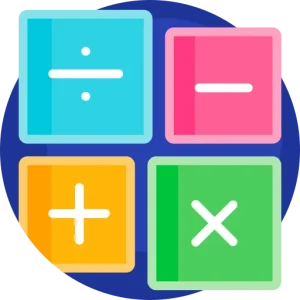Quants Menu
- HCF and LCM
- Number System
- Number Decimals & Fractions
- Surds and Indices
- Divisibility
- Ages
- LCM
- HCF
- Inverse
- Speed Time and Distance
- Work and Time
- Boats and Streams
- Pipes and Cisterns
- Averages
- Allegations and Mixtures
- Ratio and Proportions
- Simple & Compound Interest
- Simple Interest
- Compound Interest
- Percentages
- Profit & Loss
- Successive Discount 1
- Successive Discount 2
- AP GP HP
- Arithmetic Progressions
- Geometric Progressions
- Harmonic Progressions
- Probability
- Permutation & Combination
- Combination
- Circular Permutation
- Geometry
- Heights and Distances
- Perimeter Area and Volume
- Coordinate Geometry
- Venn Diagrams
- Set Theory
- Algebra
- Linear Equations
- Quadratic Equations
- Logarithms
- Clocks
- Calendars
- Clocks and Calendars
- Finding remainder of large powers
PREPINSTA PRIME
Linear Equations Questions and Answers
Questions on Linear Equations
Linear Equation Questions and Answers: Your Ultimate Resource | Top Tips and Tricks Discover a treasure trove of linear equation Q&A with top tips and tricks for solving them like a pro. Improve your problem-solving abilities and excel in math exams with our detailed answers.

Tips to solve Linear Equations :
Here are some useful tips to help you solve linear equations efficiently:
Isolate the Variable: The goal is to get the variable (usually represented by �x) on one side of the equation. Use inverse operations (addition, subtraction, multiplication, division) to move all other terms to the other side.
Combine Like Terms: If you have multiple terms with the variable on the same side, combine them to simplify the equation.
Use the Distributive Property: When dealing with parentheses, distribute the terms inside the parentheses to eliminate them.
Eliminate Fractions: If the equation contains fractions, multiply both sides of the equation by the common denominator to eliminate them.
Keep Equations Balanced: Perform the same operation on both sides of the equation to maintain equality.
Simplify Radicals: If there are square roots or other radicals, try to simplify them by finding perfect square factors.
Be Mindful of Negative Numbers: Pay attention to negative signs and avoid making sign errors during calculations.
Check Your Solution: After finding the value of the variable, plug it back into the original equation to ensure it satisfies the equation.
Practice Regularly: Like any skill, practice is crucial for mastering linear equations. Solve various problems to build your proficiency.
Learn Common Mistakes: Be aware of common mistakes students make while solving linear equations and avoid them.
Graphical Representation: Sometimes, graphing the equation on a coordinate plane can help visualize the solution.
Word Problems: Convert word problems into linear equations by defining variables and setting up the equation before solving them.
By following these tips and practicing regularly, you’ll become more confident and proficient in solving linear equations. Happy math solving!
Rules for Linear Equations Questions and Answers.
- If a=b then a+c=b+c for any c. All this is saying is that we can add a number, c, to both sides of the equation and not change the equation.
- If a=b then a−c=b−c for any c. As with the last property we can subtract a number, c, from both sides of an equation.
- If a=b then ac=bc for any c. Like addition and subtraction, we can multiply both sides of an equation by a number, c, without changing the equation.
- If a=b then a/c=b/c for any non-zero c. We can divide both sides of an equation by a non-zero number, c, without changing the equation.
Prime Course Trailer
Related Banners
Get PrepInsta Prime & get Access to all 200+ courses offered by PrepInsta in One Subscription
Also Check Out
Linear Equation Questions and Answers

Please login to report
Also Check Out
Get over 200+ course One Subscription
Courses like AI/ML, Cloud Computing, Ethical Hacking, C, C++, Java, Python, DSA (All Languages), Competitive Coding (All Languages), TCS, Infosys, Wipro, Amazon, DBMS, SQL and others
- Algebra –
Questions |
Formulas |
How to Solve Quickly |
Tricks & Shortcuts - Quadratic Equations –
Questions |
Formulas |
How to Solve Quickly |
Tricks & Shortcuts

 Apply For Jobs
Apply For Jobs Get Hiring Updates
Get Hiring Updates



